This week on the Truth for Teachers podcast: A simple 4-step system for closing out and deconstructing your room in a single day!
The end of the school year can feel super crazy because it means lots of closeout tasks for the teacher.
We’ve got tons of paperwork, plus bulletin boards to remove, supplies to label and pack away, cleaning, and more.
You as the TEACHER have plenty of things to do. But often, the kids don’t.
Standardized tests are done, gradebooks have been closed out for the year, and often our students feel like they’re just biding their time until summer break. Kids are perceptive — they know when we’re distracted and are just trying to get them out of our hair, and we end up spending the whole day trying to keep them on-task, and the close out tasks just keep piling up.
Rigorous activities for students during the last weeks of school
My K-12 emergency sub plans have activities that are rigorous for kids but EASY for subs: there are short, simple directions that any sub can easily follow, with no teaching required.
These plans are great if you need to call out sick, but they’re also fantastic when you’re NOT absent during the last few weeks of school.
The activities are rigorous and engaging (NOT busywork!) And, students can complete them independently–no teaching required–while you work on classroom closeout tasks.
You can also use these if your school is short on substitutes and you’re covering for your colleague’s classes: the activities can be printed (or completed online at the secondary level) for students to work on independently.
The full set of sub plans includes enough for 10 entire days of school, and you can get one day’s sub plans for FREE. Just click the link for your grade level below. Then, click the big VIEW PREVIEW button at the top of the page to download sub preparation tips + a full day of sub plans:
Your students can work on these activities while you prepare for classroom closeout tasks.
Those closeout tasks may include completing end of year paperwork, returning materials, organizing/decluttering, etc. You can begin this process 2-4 weeks before the end of the school year, depending on how much you have to do and how much you like to work ahead.
Read on for a simple 4-step system I created for closing out and deconstructing your room in a single day, and pace yourself so the rest of your end-of-year tasks don’t feel so unmanageable.
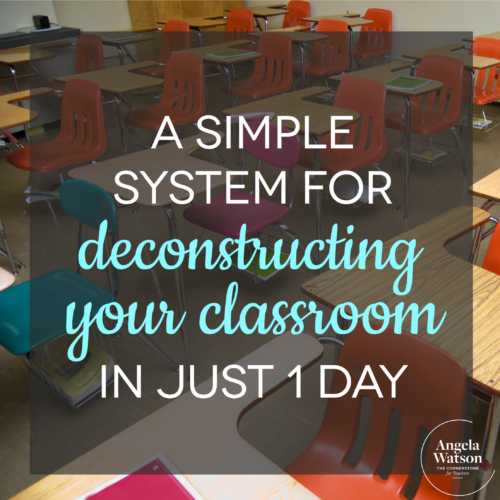
Want to listen instead of read?
Listen to episode 127 below,
or subscribe in your podcast app.
#1 Do everything BUT room deconstruction in advance.
The final weeks of school are when you’ll complete your end of year paperwork, return materials, start organizing/decluttering, and all the other types of close out tasks. You can begin this process 2-4 weeks in advance, depending on how much you have to do and how much you like to work ahead.
But, don’t confuse deconstructing the room with closing out your classroom. Avoid the trap of closing up your classroom library, centers, packing up textbooks, and so on a full month in advance.
A lot of teachers start early because they don’t want to feel overwhelmed with cleaning, organizing, and packing during the last week. Also, taking things off the walls and storing materials away in boxes or covered shelves makes a huge difference visually, so it FEELS like you’ve made a lot of progress.
However, deconstructing the room too early throws off all kids’ daily routines, and ramps up their excitement levels and behavioral issues. If you have an organized system and you’re allowed to have the kids help you, the entire classroom can be deconstructed in about two hours. So there’s no reason to do that weeks in advance. I have experimented with many different approaches and I’ve found that room deconstruction generally works best on the second-to-last day of school.
In the weeks leading up to the last day, you’ll complete your end-of-year paperwork and return materials and start organizing/decluttering, etc. Pace yourself during the last few weeks of school so you’re doing just a bit of close out paperwork and a few tasks at a time. (If you want help figuring out what that looks like, check out the resource below.)
Want editable checklists to show you what to do during each week?
Click to get my done-for-you system on sale now.
Tackle your close out tasks slowly, but keep the classroom looking exactly the same for as long as possible so you can keep your regular routines in place. Then on the second-to-last day of school, turn your full attention to overseeing classroom deconstruction.
If you do it any sooner or try to spread the tasks out over a week or two, it will be very difficult for the kids to concentrate on academic work because the room screams, “We’re done here!”
#2 List out all deconstructing jobs that students can help with
Want to use my list to help you get started?
Click to get a free copy sent to your inbox.
I usually had a list of about 30-40 jobs, and my third graders were able to complete every task on the list in less than two hours using the process I’m about to explain. We’d start around 10 a.m. and be done by noon, with a handful of miscellaneous tasks completed after lunch.
Once you know what needs to be done and have those tasks listed, you’re going to…
#3 Pair up students so you can assign tasks to them
You can either match names on a class list you keep privately, or display the list and explain the pairs to your class. Give thoughtful consideration to students’ personalities when choosing the pairs: You want to match up kids who get along well so they can get the task done and won’t interrupt you to constantly settle arguments.
You also want to pair up kids who have similar strengths: For example, pair up your most organized students so they can do tasks like filing and library organization, and pair up students who are extremely active so they can move furniture and run errands around the school.
For secondary teachers (and others who see multiple classes each day), be sure to break down the jobs into tasks that can be completed within a single class period. It might be easier to give tasks to groups of students instead of pairs. You can also consider chunking the jobs so that each class participates to some degree, and the classes with your most responsible students are assigned the most important tasks.
Then, on the second-to-last day of school…
#4 Get the class engaged in a fun assignment while pairs of students take turns deconstructing
You’ll need meaningful, engaging independent work that the kids WANT to do so you don’t have to nag them to stay on task. Pick something fun!
While the rest of the class is working, call just a few pairs of students at a time to complete the deconstruction tasks.
Call one pair of students over to your desk and explain the task you’ve assigned to them. Once you’re confident they understand what to do and will be successful, call over another pair and assign the next task. I usually have about 2-5 pairs of students deconstructing the classroom at any given time. If things start to feel chaotic or difficult to manage, don’t call any more pairs until another pair has finished.
Whenever a pair of helpers finishes their assigned tasks, they should automatically go back to completing the whole class assignment until you need them again. If they’re unable to do this quietly, don’t call them to help with any more tasks.
Rotate through each pair of students as many times as needed until all the jobs are finished.
And that’s it — your entire room can be taken down in less than half a day! You can adapt this process in any way that makes sense for your teaching context, of course, but keep the four core elements in place, because that’s what makes it so effective.
Here’s how this system worked for other teachers
The Stress-Free End of Year Close Out System is included in the 40 Hour Teacher Workweek Club materials. Hundreds of members tried this method last school year. Here are their results:
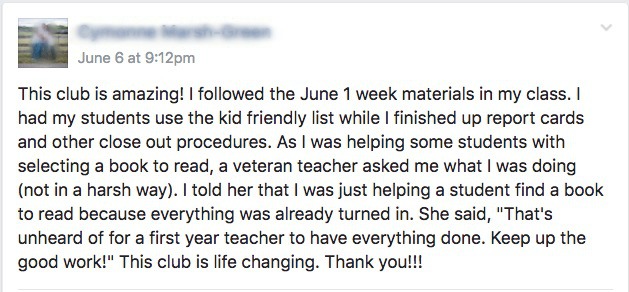
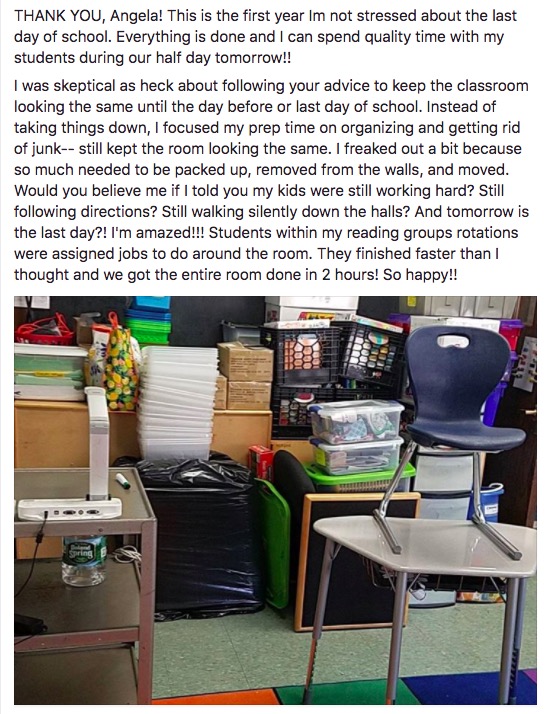
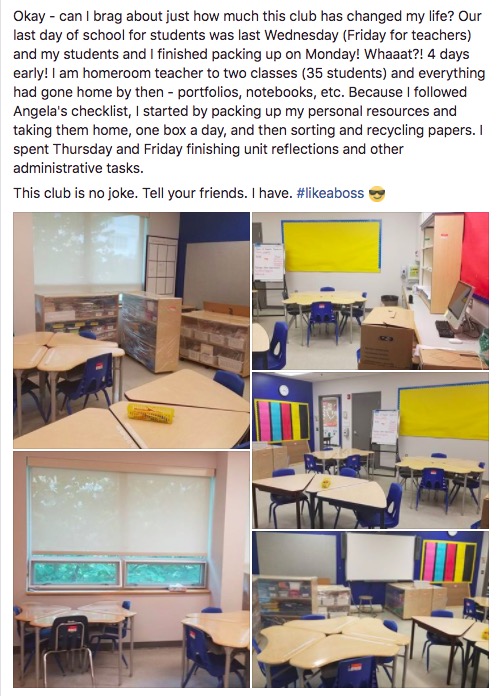
Here’s the secret to making the whole process come together …
Be 100% present with your kids — stay completely focused on them and classroom management during the room deconstruction process.
Make sure the majority of the class is engaged in worthwhile learning activities, and periodically circulate throughout the room to interact with kids and ensure they know what they’re doing. The rest of your time should be spent overseeing the students who are assisting with various end-of-the-year tasks.
That way, the kids know you aren’t distracted with your own end-of-year tasks, and they’ll take both the assignment and deconstruction tasks seriously.
The Truth for Teachers Podcast
Our weekly audio podcast is one of the top K-12 broadcasts in the world, featuring our writers collective and tons of practical, energizing ideas. Support our work by subscribing in your favorite podcast app–everything is free!
Explore all podcast episodes
Angela Watson
Founder and Writer
Sign up to get new Truth for Teachers articles in your inbox
Discussion
Leave a Reply
OR

Join our
community
of educators
If you are a teacher who is interested in contributing to the Truth for Teachers website, please click here for more information.











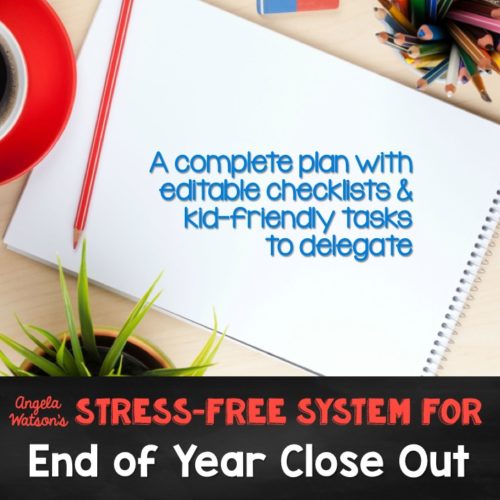
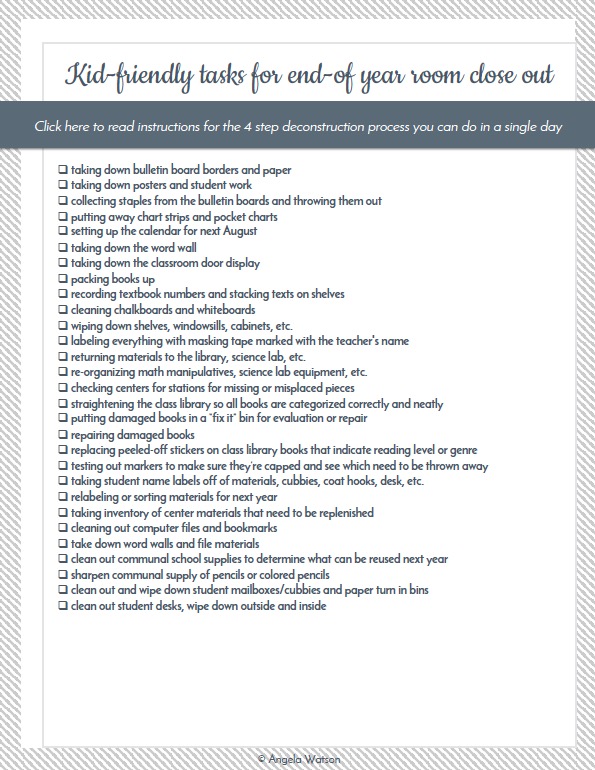









I was in the 40 Hour Teacher Work Week Club last year. How can I access the end of year close out resource?
Hi, Meg! If you were in the club last year, it wouldn’t be included with your materials (the resource wasn’t created until this year.) 🙂 However, you can find something very similar under June Week 1. Also, if you want to get all the new and updated club materials for like, that is available through the grad program. You can learn more about that here.